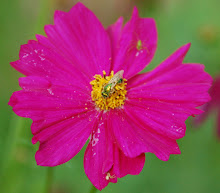
A couple of weeks ago I missed the Austin Organic Gardeners monthly meeting. I wanted to go because the topic was one of my favorites--fall vegetable gardening, but I completely forgot. Luckily, a friend did not and shared her notes with me.
About 130 people attended the meeting, more proof that interest in vegetable gardening is exploding. (I think regularly the meetings have about 30 people.) The speaker was Tim Miller, who runs a CSA-farm in Kyle. The most amazing part of his farm is that it's all dryland farming. Miller uses no supplemental water. Unbelievable! Particularly with the summer we've had. I so wish I had remembered to attend and learned more about this.
One of the keys to Miller's success is meticulous record keeping. He tracks rainfall, wind direction, moon phase, temperatures, when the seedling emerge, etc. From his records, he came up with this planting schedule, which is far more specific than the Organic Gardeners planting calendar I usually reference. The dates are tied to the phases of the moon and specific to the Austin area.
The only thing I am unsure about on this calender is the September 4th date for flowers (most annuals). I wonder if that includes wildflowers?
A couple other interesting tidbits from Miller's talk: he expects us to have an early freeze this year--October 14. At this point of the summer, it's hard to imagine temperatures below 70 degrees, much less 32 degrees. He also noticed that when we did get rain this summer it was usually around the full moon.
I think I will give his schedule a try. It will encourage and remind me to plant successive crops of certain vegetables, and maybe, just maybe this year I will end up with at least one full-sized carrot!
Have any of you had success planting according to the phases of the moon?


Thanks so much for sharing this, Vertie. On Tim's schedule, if it just lists "beets", for example, does that indicate seeds only (not plants)?
ReplyDeleteIris, yes, the beets are seeds only. Beets don't do well as transplants so they should be seeded directly in the bed.
ReplyDeleteAre there other fall veggies that are notorious for not doing well as transplants and must be seeded (Sorry for the interrogation--I'm still new at growing veggies.)
ReplyDeleteAn Oct. 14 freeze would be early indeed. I'm doubtful, but that's probably because I live in the hottest part of Austin. If you're outside the city, as he must be, then maybe...
ReplyDeleteIris, no problems with the interrogation. I'm still learning too. Most root crops--beets, radishes, and carrots--are better off being directly seeded. I've also had luck direct seeding lettuce and chard. I am not sure about turnips as I've never grown them. Most of the others you can start inside or plant seedlings.
ReplyDeleteWow, I had no idea that you could farm in Central Texas without extra water. I'm going to have to start reading up on dryland farming!
ReplyDeleteThanks for linking to that planting calendar, by the way. I really need a guide for planting non-perennials, since I'm still not used to this climate. This fall I plan to start with tomatoes, but I haven't been able to find cherry tomato seedlings anywhere, and I'm not sure I trust myself to water a beefsteak consistently enough.
Fascinating! Thank you.
ReplyDeleteFascinating, the amount of record keeping he must do to come up with his information and be successful without watering. Did he predict your Austin heat wave/drought this summer? And it will be interesting to see if you do get that early frost...
ReplyDelete